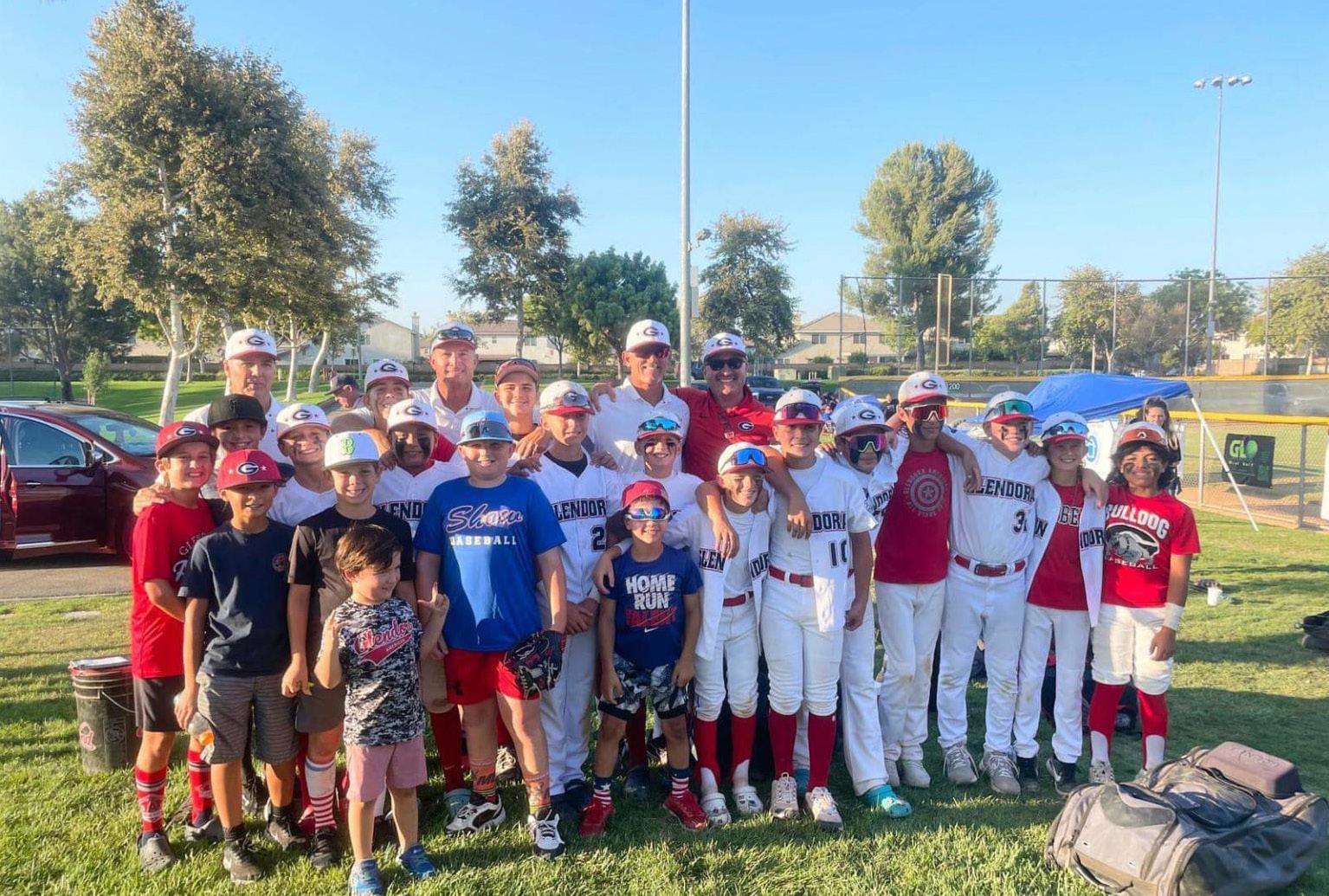
17 minute read
News . . . 3
Glendora eliminated in Little League West Region Tournament
By City News Service
Advertisement
California farmworker's 24day march sets pressure on Newsom to sign voting bill
By Alex Cordero
The Glendora American Little League's 2022 All-Star Team. | Photo courtesy of the Glendora American Little League/Facebook
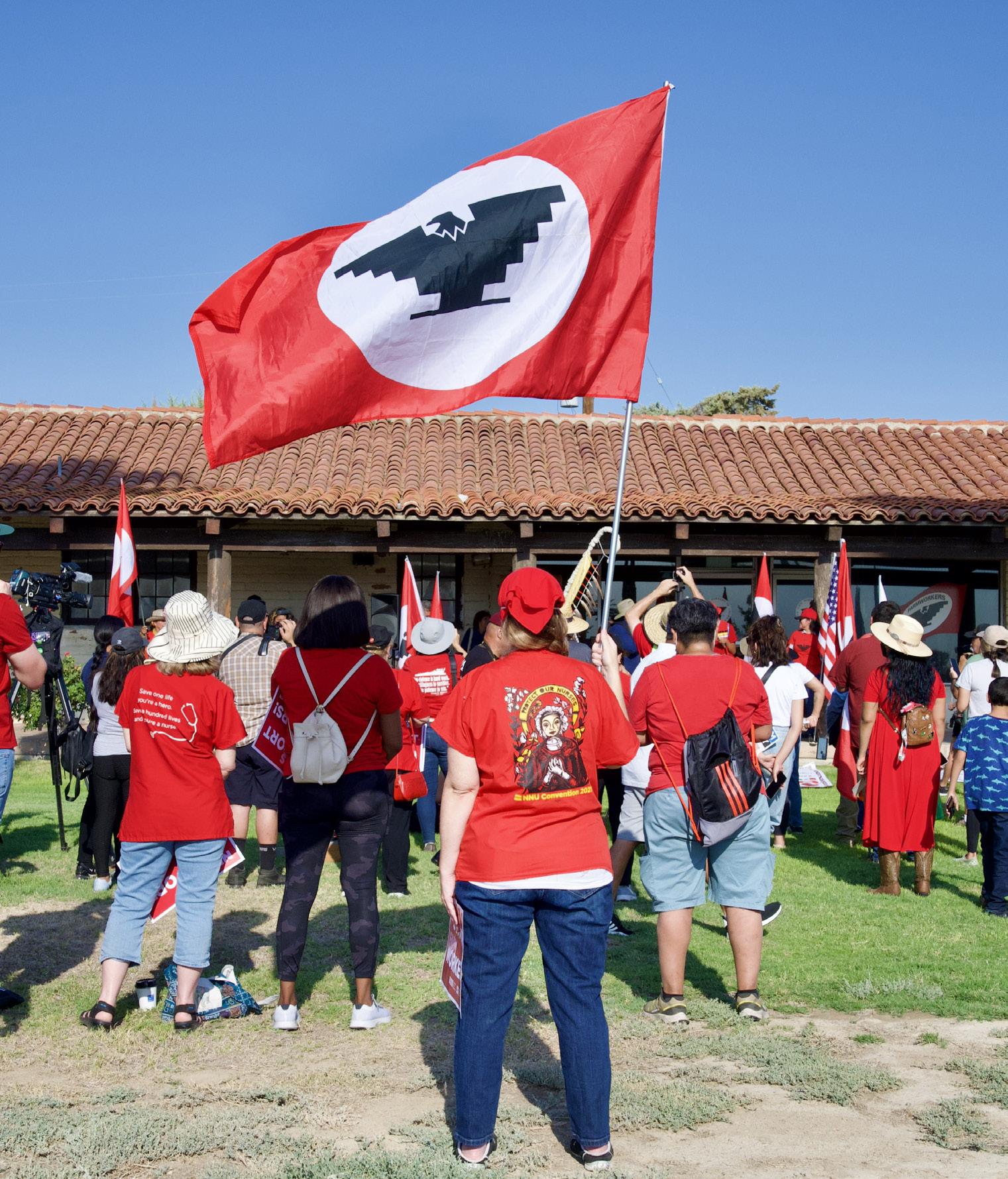
The quest by the all-star team from the Glendora American Little League to reach the Little League World Series ended Sunday with a 7-6 loss to its counterpart from the Sidewinder Little League of Peoria, Arizona in the Little League Baseball West Region tournament.
Special pinch-runner Brandon Ashing scored the winning run on a wild pitch by Cade Burbidge with two outs in the bottom of the sixth and final inning. Ashing ran for Troy Tewers, who singled with one out. Ashing moved to second on a wild pitch and advanced to third one out later on an error by Aiden Garcia, the Glendora shortstop, on a ground ball hit by Jaxon Clubb.
Trailing 6-4 in the elimination bracket game, Sidewinder scored twice in the fifth to tie the score. Clubb led off with a single, Erik Lopez followed with triple and scored when the next batter, Wes Wolfley, singled.
Glendora combined a hit batter, Burbidge's single, a passed ball and a two-out error for two runs in its half of the fifth, regaining the lead.
Glendora opened the scoring with three runs in the second. Nick Norell and Preston Tymchak drew back-to-back fourpitch walks with one out. Norell scored and Tymchak advanced to third when the next batter, Kolt King, reached second on an error by Tewers, the Sidewinder first baseman.
Tymchak scored one out later on Garcia's infield single. King stole home for the third run.
Sidewinder scored four runs in its half of the second, sending nine batters to the plate.
Clubb led off with a single, moved to third on Lopez's single and scored on a wild pitch by Drew Jacobsen, Glendora's starting pitcher. Lopez went to second on the wild pitch, beat Jacobsen's throw to third on a bunt by Ashing that was ruled a fielder's choice, and scored on a sacrifice fly by Blake Gates, Sidewinder's No. 9 hitter.
Sidewinder loaded the bases with two outs on Reid Holtorf's infield single and an error by Sebastian Lawrence, Glendora's third baseman, on a ground ball hit by Janzen Silva. Ashing and Holtorf scored on Tewers' single.
Glendora tied the score, 4-4, in the third. Josh Calcanas led off with a single, moved to second and third on two wild pitches by Lopez, Sidewinder's starting pitcher, and scored on Lawrence's ground out.
Clubb, the second Sidewinder pitcher, was credited with the victory, allowing two runs, both unearned, and two hits over the final 2 2/3 innings.
Burbidge, the third Glendora pitcher, was charged with the loss, allowing three runs, two earned, and four hits in 1 2/3 innings.
The victory advances Sidewinder, the Arizona state champion, into Wednesday's elimination bracket final, against the loser of Monday's winner's bracket game between the all-star teams from the Honolulu Little League and the Rocklin, California-based Tri City Little League.
Wednesday's winner will advance to Friday's championship game, whose winner qualifies for the Little League World Series.
Glendora, the Southern California champion, was relegated to the elimination bracket in the modified doubleelimination tournament at Al Houghton Stadium in San Bernardino with a 3-0 loss Saturday to Honolulu, the Hawaii state champion, in the tournament opener for both teams.
Sidewinder lost 5-0 Saturday to Tri City, the Northern California champion, in the tournament opener for both teams.
Hundreds gather in Delano on day 1 of a 24-day farmworker pilgrimage to Sacramento for Governor Newsom's signature on The Labor Relations Voting Choice Act. | Photo courtesy of Alex Cordero
Hundreds of farmworkers and supporters gathered in Delano at Forty Acres, the first United Farm Workers Union location at the start of the treacherous 335-mile march to Sacramento last week.
Farmworkers are marching to convince Newsom to sign Assembly Bill (AB) 2183, The Labor Relations Voting Choice Act.
The bill will allow farmworkers to unionize privately, whenever, or wherever, they feel safe.
Currently, farmworkers cast their confidential vote to support or oppose unionization at designating polling places typically located on grower or company’s property, where they may be approached by anti-union consultants persuading them to vote as the growers may want.
Governor Newsom vetoed a similar bill last summer stating, “various inconsistencies and procedural issues related to the collection and review of ballot cards.” Farmworkers believe they should have the same rights Californians who vote in general elections have to receive their ballots at home and drop them off or send them via mail.
Farmworkers have been working toward a more aggressive plan to gain national support on AB 2183 based on historic strategies that have worked in the past.
During the 1960s when the first pilgrimage of this magnitude led by American labor leaders and civil rights activists Cesar Chavez and Dolores Huerta was to bring national attention to the injustices embedded by segregation and racism toward the farmworker in California for decades.
They were successful in having the United Farm Workers of America union recognized and were able to secure its first union contract. Farmworkers led the second 24-day march in 1994 a year after Cesar Chavez's passing in honor of his legacy where thousands showed up in support of farmworkers at the State Capitol in Sacramento.
Today, 92-year-old Dolores Huerta showed up to support the marchers and served as an inspiration for the next generation of farmworker activists.
The 335-mile pilgrimage consists of over 20 farming cities from Delano to Modesto to Stockton and every farming community in between leading to Sacramento.
The march is scheduled to end on Aug. 26, which was proclaimed as California Farmworker Day by Governor Newsom.
San Clemente City Council votes to drop proposed abortion ban
By City News Service
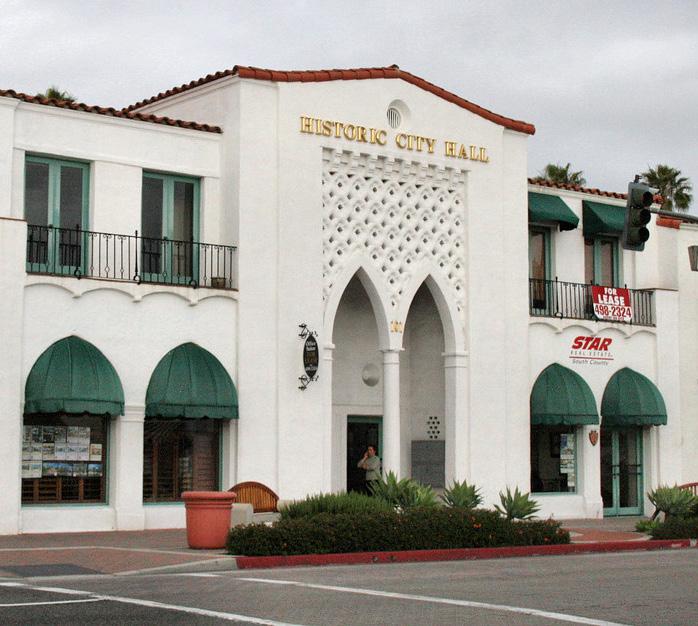
Acontroversial proposal that would have made San Clemente a "Sanctuary For Life," blocking abortion access within the city limits, will not go forward.
The San Clemente City Council voted 3-1 during a special Saturday session to remove the resolution from its Aug. 16 meeting agenda after hearing from mostly outraged citizens during a public comment period that lasted about two hours.
The majority of residents who addressed the council criticized Councilman Steve Knoblock's proposal, accusing Knoblock of over-reaching and seeking to impose his personal religious beliefs on the city's women. Many also expressed concern about the effect of such a move on the city's reputation and business interests.
A smaller number expressed support for the resolution and praised Knoblock for his courage in bringing it forward.
Mayor Pro-Tem Chris Duncan called the resolution an attempt to "subjugate women and girls like my daughters into second-class citizens."
But Knoblock, the lone vote against pulling the resolution, offered a fiery defense of his actions. "There was a lot of discussion today about the can of worms being opened. This resolution didn't open a can of worms. The issue of abortion is a public policy issue that is now at the forefront of society," he said. "In the state of California, the Democratcontrolled legislature and governor has put on the agenda the unfettered constitutional right for a woman to kill her baby clear up any time through delivery, through the entire 10 months ... That can of worms has been opened. "That's why I suggested this city take an action to oppose that. It is a slippery slope, and it's one that this society is going to have to deal with," Knoblock added.
Major Gene James took responsibility for holding the special meeting on short notice. "We did rush this, and the reason why we rushed it was many of you wrote to us wanting it rushed," James said.
The mayor added that the council received threats over the divisive issue that had to be referred to the Orange County Sheriff's Department and the District Attorney's Office. "I will take responsibility to say I wanted to do this today. As the mayor, I did have the authority to call for a meeting with 24 hours notice. That was not intended to silence anyone ... it was an attempt on my part to put this behind us."
The imbroglio, which gained national attention, showed how the abortion issue has become a hot-button topic in local governments across the United States in the weeks since the U.S. Supreme Court overturned 1973's Roe v. Wade decision that made abortion legal throughout the country, sending the issue back to each individual state.
Councilwoman Laura Ferguson told City News Service she was approached by James to introduce the resolution last month, but declined. She said Knoblock brought it up at the July 19 meeting.
Ferguson said she has high regard for Knoblock and added, "He's been a friend for years, but I just disagree with him on this one."
Knoblock told the Los Angeles Times he wanted to send a message to the rest of California that "we think life is important, and we think 60 million unborn babies that have been killed in the womb is a sad thing and shouldn't be continued."
California Attorney General Rob Bonta and two local law school professors last week called the potential resolution unenforceable. "In California, the right to choose remains fully protected, and abortion remains fully legal within our state," a spokesperson for the Attorney
San Clemente City Hall. | Photo courtesy of Chris Jepsen/Flickr (CC BY 2.0)
General's Office told City News Service Wednesday. "Attorney General Bonta is committed to defending reproductive freedom and state law."
Ferguson said the resolution would have been a "symbolic, non-binding resolution. It has no teeth. It clearly just states the position of someone on the council. I personally believe in a person's liberties and freedoms. "We're out of our lane on this one. It's a huge distraction. We have issues. We have homelessness like most coastal cities do and the housing element to address."
UC Irvine political science and law professor Tony Smith characterized the move as "cheap political theater. "This is akin to `The Little Rascals' putting on a show," Smith said, referring to group of child actors who starred in a series of comedy short films from 1922 to 1944. "There's nothing to this, no capacity for this to be successful. "And this is absolutely not what any city voter wants their City Council to be doing. Even city residents who believe abortion should be outlawed don't want their City Council deciding what rights they do and don't have."
Chapman University law professor Mario Mainero pointed out that the issue of whether a city can act independently of state law has already been addressed in recent years when Huntington Beach failed in its lawsuit to stop the state's sanctuary state policy for immigrants living in the country illegally and when the county failed to try to enforce a law to prohibit registered sex offenders from all parks. Legal precedent was set in the appellate courts on the question. "Under state law abortions are legal at least to the point that the standard Roe had," Mainero said. "State law preempts local law in most cases. Certainly on matters like this because even if San Clemente were a charter city this is not an item where a charter city could violate the state constitution... So if San Clemente passes something like this it's void."
UCI law professor Michele Goodwin agreed. "There can be no such thing as an abortion-free community in the state of California where one's rights, according to the state constitution and legislative enactment, are in force and in place," Goodwin said. "That's true whether we're talking post-Dobbs or pre-Roe vs. Wade. The state of California has been very clear about the principles of reproductive freedom and that doesn't change because there are elected council leaders who are seeking to get local or national attention by attempting to establish that community as an abortionfree zone."

UCLA study: AI tools more rapidly identify substances causing overdose deaths
By City News Service
An automated process based on computer algorithms that can read text from medical examiners' death certificates can substantially speed up data collection of overdose deaths — which in turn can ensure a more rapid public health response time than the system currently used, according to UCLA research released Monday.
The analysis, published in the peer-reviewed JAMA Network Open, used tools from artificial intelligence to rapidly identify
substances that caused overdose deaths. "The overdose crisis in America is the number one cause of death in young adults, but we don't know the actual number of overdose deaths until months after the fact," said study lead Dr. David Goodman-Meza, assistant professor of medicine in the division of infectious diseases at the David Geffen School of Medicine at UCLA. "We also don't know the number of overdoses in our communities, as rapidly released data is only available at the state level, at best," he said. "We need systems that get this data out fast and at a local level so public health can respond. Machine learning and natural language processing can help bridge this gap."
Overdose data recording currently involves several steps, beginning with medical examiners and coroners, who determine a cause of death and record suspected drug

overdoses on death certificates, including the drugs that caused the death. The certificates, which include unstructured text, are then sent to local jurisdictions or the Centers for Disease Control and Prevention which code them according to a World Health Organization classification of diseases and related health problems. According to UCLA researchers, the coding process is time-consuming as it may be done manually. As a result, there is a substantial lag time between the date of death and the reporting of those deaths, which slows the release of surveillance data. This in turn slows the public health response.
Further complicating matters is that under this system, different drugs with different uses and effects are aggregated under the same code — for instance, buprenorphine, a partial opioid used to treat opioid use disorder, and the synthetic opioid fentanyl are listed under the same code, the UCLA analysis found.
For the new study, researchers used artificial intelligence to analyze nearly 35,500 death records for all of 2020 from Connecticut and nine U.S. counties, including Los Angeles and San Diego. Scientists described how combining AI, which uses computer algorithms to understand text, and machine learning can automate the deciphering of large amounts of data with precision and accuracy. They found that of the 8,738 overdose deaths recorded that year the most common specific substances were fentanyl (4,758, 54%), alcohol (2,866, 33%), cocaine (2,247, 26%), methamphetamine (1,876, 21%), heroin (1,613, 18%), prescription opioids (1,197, 14%), and any benzodiazepine (1,076, 12%). Of these, only the classification for benzodiazepines was suboptimal under this method and the others were perfect or near perfect.
Most recently, the CDC released preliminary overdose data that was no sooner than four months after the deaths, GoodmanMeza said. "If these algorithms are embedded within medical examiner's offices, the time could be reduced to as early as toxicology testing is completed, which could be about three weeks after the death," he said.
The researchers noted some limitations to the study, the main one being that the system was not tested on less common substances such as antiseizure medications or other designer drugs, so it is unknown if it would work for these. Also, given that the models need to be trained to rely on a large volume of data to make predictions, the system may be unable to detect emerging trends, researchers said.
For the new study, researchers used artificial intelligence to analyze nearly 35,500 death records for all of 2020 from Connecticut and nine U.S. counties. | Photo courtesy of The Javorac/Flickr (CC BY 2.0)
vote for your favorite businesses here
LA County voters to decide whether to impose business tax on cannabis
By City News Service
Los Angeles County voters will be asked in November to consider a ballot measure that would impose business taxes on cannabis operations in unincorporated areas, once such businesses are permitted.
The county is still developing regulations for cannabis operations in unincorporated areas, with an ordinance expected to come before the Board of Supervisors next year. In the meantime, the board on Tuesday voted unanimously - - with Supervisor Janice Hahn absent -- to place a proposed tax measure on the Nov. 8 ballot.
The measure will require a simple majority of voters to be approved.
The proposal would enact a series of initial tax rates -- 4% for gross receipts for retail operations, 3% for manufacturing and distribution, $4 per square foot for mixed light cultivation and $7 per square foot for indoor cultivation. According to county staff, the levies would initially generate an estimated $10.36 million a year. Those rates would be in effect until July 1, 2026, after which the ordinance outlines additional increases in the rates.
Although regulations for cannabis operations in unincorporated areas are still being developed, county staff indicated that the initial plan will allow for up to 25 storefront retail cannabis businesses countywide, 25 delivery retail businesses, 10 indoor/mixed light cultivation establishments, 10 manufacturing businesses, 10 distribution facilities and 10 testing laboratories.
The businesses are expected to be distributed equally in each of the five supervisorial districts.
Supervisor Kathryn Barger, whose district includes the rural northern reaches of the county that are hotspots of illegal marijuana operations,
said in a statement the action approved Tuesday does not mean there will a proliferation of outdoor grows. "The approach we've
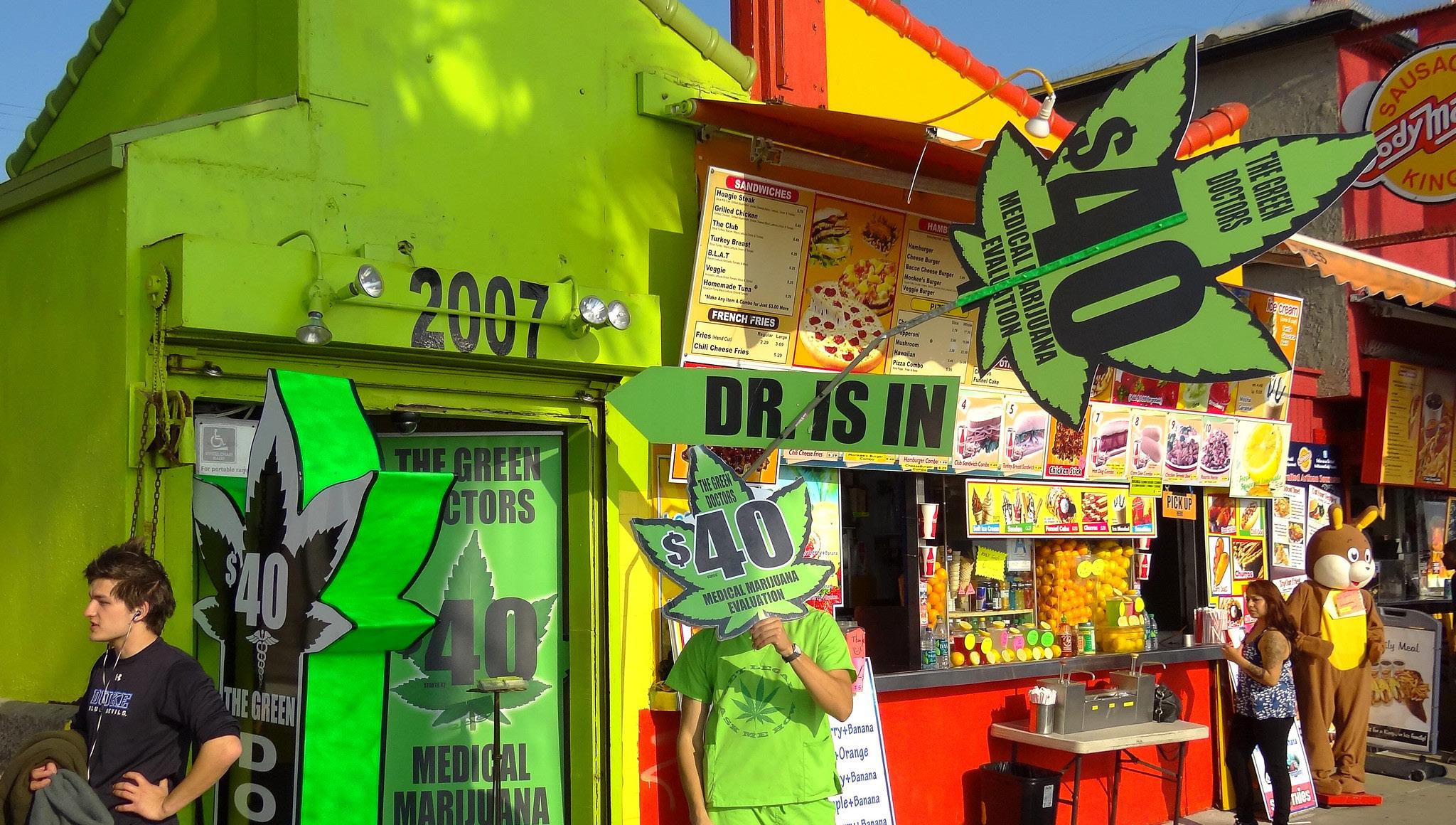
adopted will equitably distribute legal cannabis businesses in each supervisorial district and specifies that cannabis cultivation will only be permitted indoors -- not outdoors in greenhouses," she said. "Our board must be clear: we will not tolerate illegal cannabis operations. Growers who operate illegally undermine our efforts to create a regulated and responsible cannabis industry, and often do so at the expense of the rural communities I represent. I'm firmly committed to upholding the law and will corral all available resources to enhance enforcement and abatement efforts."
Medical marijuan shop in Venice Beach. | Photo by Adam Jones (CC BY 2.0)
STARTING A NEW BUSINESS? VISITE NOTICEFILING.COM


Open for OUTDOOR and INDOOR DINING Mon-Sun 11am-9pm
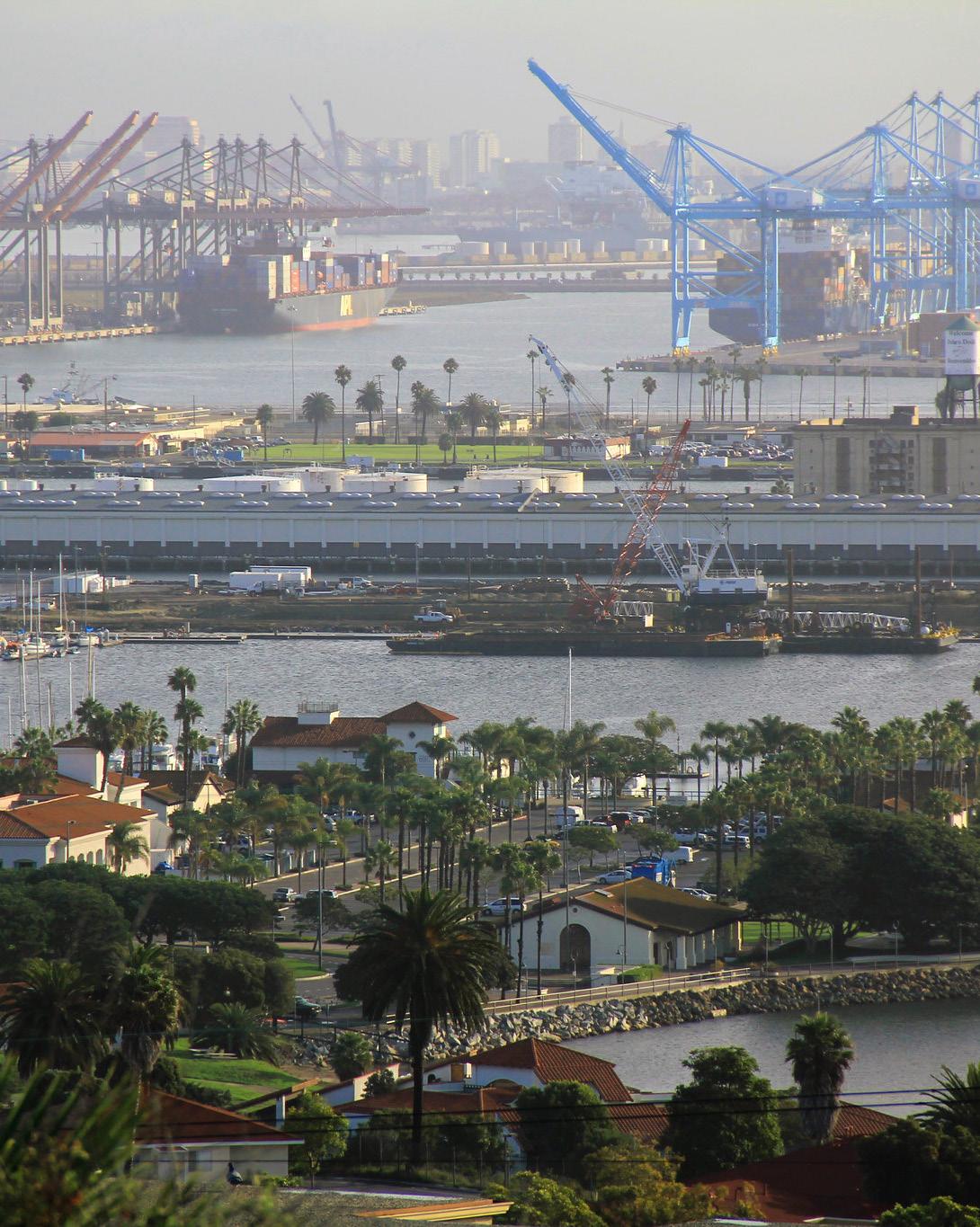
Port of LA gets $3M from U.S. Department of Transportation to reduce congestion
By City News Service
Port of Los Angeles. | Photo by Green Fire Productions (CC BY 2.0)
The Port of Los Angeles received $3 million in grants from the U.S. Department of Transportation for a gateway project to reduce congestion, the department announced Wednesday.
The funding will help the port use advanced technologies to improve freight movement and trucking, drayage and terminal operator activities. "This grant will accelerate our digitized data systems to further improve fluidity at the nation's busiest container port," said Gene Seroka, executive director of the Port of Los Angeles. "With our Port Optimizer, the first-of-its kind information portal, we've proven that we can streamline maritime shipping data for cargo owners and supply chain stakeholders through secure, channeled access."
Transportation Secretary Pete Buttigieg said in a statement that the gateway project will use artificial intelligence to streamline cargo staging and returns. "We're pleased to support these innovative solutions that will improve driving and public transit for Americans in urban, suburban and rural areas alike," Buttigieg said.
The federal grant program, through the Advanced Transportation and Congestion Management Technologies Deployment, has awarded $45.2 million to 10 projects this year that use such advanced technologies to improve mobility. "ATCMTD grants promote innovations that help expand access to transportation for communities in rural areas and cities alike, improve connectivity, and prepare America's transportation systems for the future," said Stephanie Pollack, acting federal highway administrator.
Also Wednesday, the Port of Los Angeles Maritime Support Facility Access/Terminal Island Rail System Project received $20 million for construction of a four-lane rail roadway grade separation located on Terminal Island at the center of the Ports of Los Angeles-Long Beach complex through separate grants from a U.S. Department of Transportation program.


